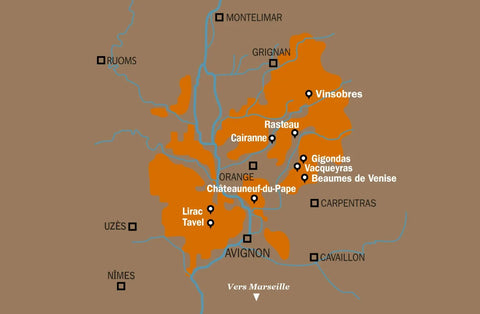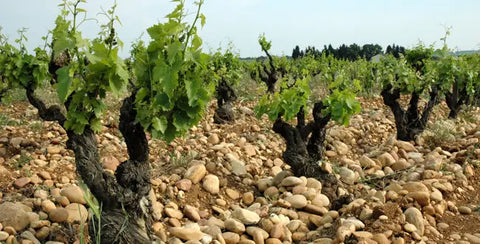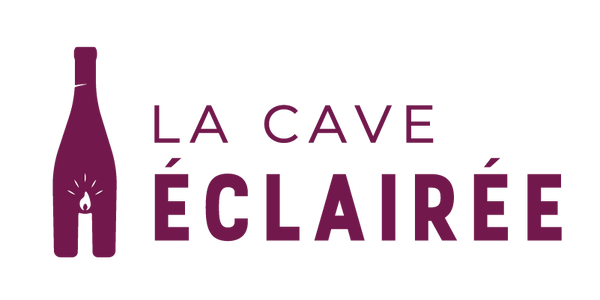What amateur has never heard of Chateauneuf-du-Pape ? This appellation resonates in history and its papal origins are as much engraved in its name as on its prestigious bottle.
Why is it " the wine of the Popes » ? What grape varieties are used? ? What to expect during tasting ? What is the long history of the appellation? Presentation.
History of Châteauneuf-du-Pape
Today, the jewel of the wine heritage of the Rhone Valley Southern and French, the history of the region's vineyards dates back to Antiquity, when vines were most likely already present.
Nevertheless, Real recognition of local wines only began in the 14th century. , when Avignon officially became the residence of the popes. It was in 1314 that Clement V left Rome and its geopolitical instability to settle in France. Avignon was chosen for its strategic location, the city being at the crossroads of major roads and having river access linking northern Europe to southern Europe.
If Clement V is the first pope of Avignon, it will nevertheless be his successor, John XXII , which will allow the wines of the area to shine at the famous table of the Palais des Papes as well as in the great European courts. From this moment, the rise of Châteauneuf wines will continue through the centuries, going through difficult periods such as that of the wars of religion in the 16th century and regaining their splendor during the 18th century.
The other major turning point came at the beginning of the 20th century, when local winemakers, eager to protect their wines (sometimes blended with those from other regions), decided in 1923 to put in place stricter regulations, unique in their kind for the time. With the help of Pierre Baron Le Roy , renowned winemaker of the appellation and lawyer, They gave birth to the modern concept of AOC. A few years later in 1936 , the appellation decree will be officially published and Châteauneuf-du-Pape will become the very first AOC wine of France , alongside Monbazillac, Tavel, Arbois and Cassis.

Geography and terroir
The Châteauneuf-du-Pape vineyard is entirely planted on the left bank of the Rhône. It now covers around 3,200 hectares and is located in 5 communes : Châteauneuf-du-Pape, Bédarrides, Courthézon, Orange and Sorgues. Around 95% of the harvest is vinified in red and 5% in white .
THE Mediterranean microclimate The region is particularly hot and the annual sunshine is very high. : 3 400 hours (compared to 1 700 hours in Paris…). The vine is generally pruned into a goblet shape in order to protect the grape clusters from the wind and sunburn.
 Goblet-pruned vines on rolled pebble soils
Goblet-pruned vines on rolled pebble soils
Talking about Châteauneuf-du-Pape also means talking about its famous iconic terroir of rolled pebbles . These stones release during the night all the heat that they store during the day, thus promoting high maturity of the grapes. However, Châteauneuf is not limited to this type of soil .The appellation has a very varied geological millefeuille : red clay, limestone shards, sandstone and sand are also very present. The latter even represent 30% of the soils of the appellation ! So be careful with shortcuts. Finally, one of the essential characteristics of the AOC is the frequency of the Mistral This cold, dry wind coming from the north dries out the vineyard, thus limiting the spread of cryptogamic diseases due to humidity.

Châteauneuf is also known for its wide variety of grape varieties : 13, or 18 if we count the color variations by type of grape (picpoul noir/picpoul blanc, clairette blanche/clairette rose etc.). If a few rare vintages are produced with all the available varieties (like the wine of the iconic Castle of Beaucastel ), most of the production comes from 3 main grape varieties: black grenache (60% of the vineyard), the Mourvèdre and the Syrah . White side, Roussanne , Grenache blanc And Clairette represent most of the grape varieties.
Chateauneuf-du-Pape : what types of wines ?
Châteauneuf-du-Pape cannot be reduced to a single style. ! If under the same sun, the wines will have as a common denominator concentrated berries that will produce generous and fleshy wines with intense aromas, we find within the AOC very opulent vintages as models of refinement. Many factors can indeed differentiate the wines produced : the winemaker's philosophy, the soils, the composition of the blends and even the cultivation practices multiply the range of possibilities.
If we were to generalize, we would describe red wines as powerful , intense, full-bodied and presenting a wide aromatic palette ranging from ripe black fruits to warm spicy notes. The whites are generally low in acidity and have a beautiful gourmet roundness. They are in the same way as the reds capable of evolving very positively in the bottle over several years or even decades.
Conclusion
Châteauneuf-du-Pape is therefore one of the finest appellations in France and is capable of producing wines that worthily represent the world elite.
If you absolutely have to try the reds, be curious and also dare to try the whites which could surprise you very positively. ! If you want excellent Châteauneuf in red as in white with top quality-price ratios, turn to the domain Pierre Usseglio which will delight you ! Finally, for the big fans, the Beaucastel Castle is a must-try that you have to try at least once in your life.
Health ! 🍷
Anecdote : The first written traces of the village of Châteauneuf date back to 1094. At the time, the town was called “ Castro new » (New fortified village).In the 13th century, it became Châteauneuf-Calcernier and it was only in 1893, at the request of the mayor of the time, Joseph Ducos, that the town took its current name, thus referring to the holiday resort of the Popes. As for the bottle proudly bearing the town's coat of arms, it was created in 1937 (1 year after the official creation of the AOC) in order to promote the appellation internationally and is a guarantee of the authenticity of the wines. The latter represents a papal tiara placed above the keys of Saint Peter.














1 comment
Très interessant et bien documenté